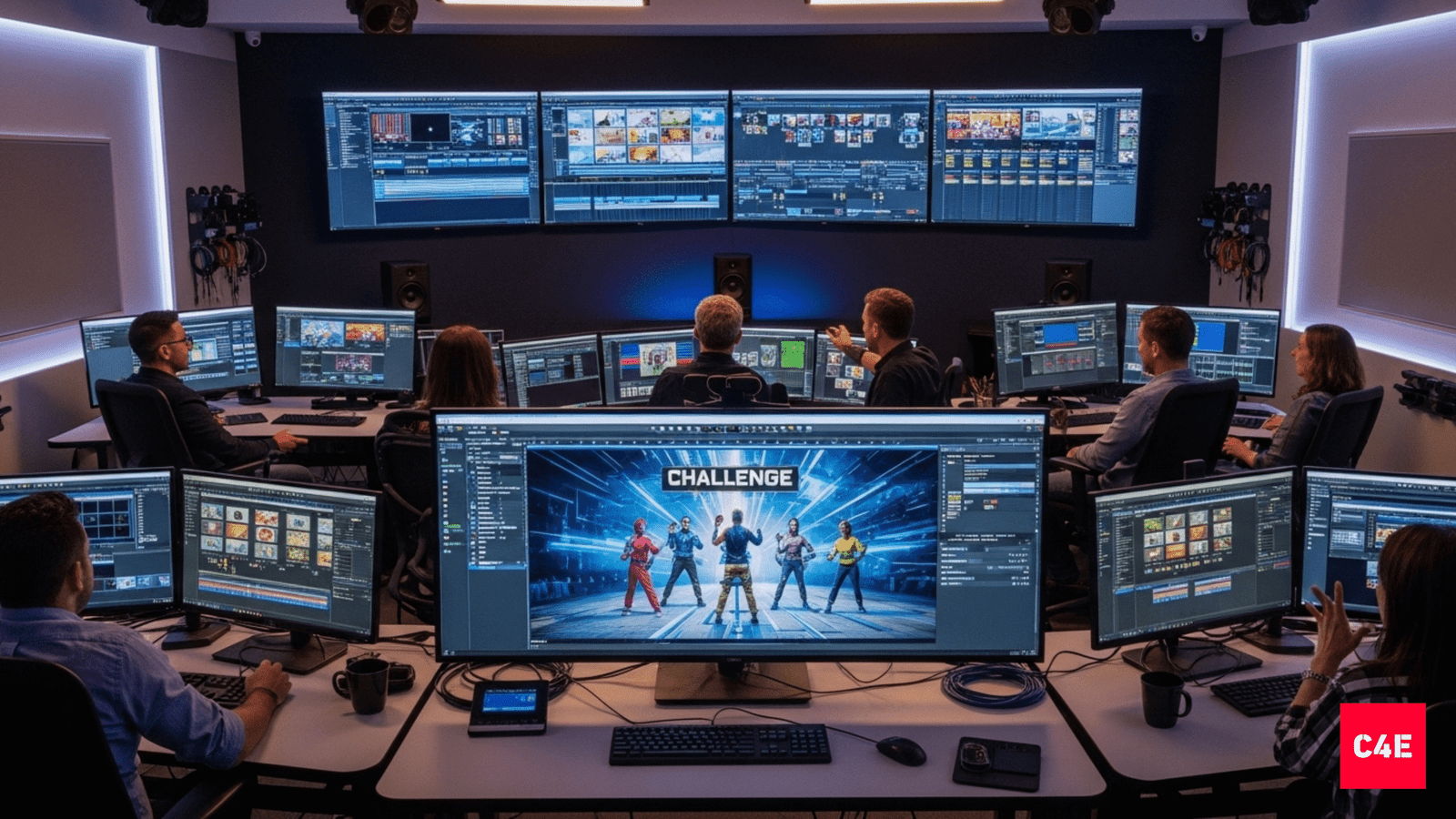
Behind the Scenes: How MrBeast’s Videos Get Edited
Most people know MrBeast for outrageous challenges, million-dollar giveaways, and jaw-dropping stunts. What they often miss is the invisible engine behind his success: editing.
Every video is a masterclass in creator workflows — from hook-driven intros to snappy cuts that keep viewers glued for 15+ minutes. While his brand may be built on big ideas, the retention numbers are built on editing precision.
MrBeast himself has said that he tests multiple versions of edits before publishing, sometimes recutting entire videos to shave seconds off intros or improve pacing. The workflow behind his content is as engineered as any startup operation.
The Anatomy of a MrBeast Edit
MrBeast videos are not stitched together randomly. Each follows a carefully designed editing process:
1. The Hook Within Seconds
- Every video opens with the big reveal: “I bought everything in this store” or “We gave away a private island.”
- Editors design high-energy cold opens, using music swells, bold transitions, and quick cuts to hook viewers in under 10 seconds.
2. Rapid Pacing
- Cuts happen every 2–3 seconds. Dead air is eliminated.
- Editors often use jump cuts and zoom punches to maintain urgency.
- Visual effects highlight stakes: timers, counters, cash amounts.
3. Layered Storytelling
- Side-by-side shots and reaction inserts add emotion.
- Sub-stories (like contestants’ journeys) are woven in to keep depth.
- Motion graphics (arrows, highlights) direct attention instantly.
4. Retention-First Editing
- Every 20–30 seconds, a new stimulus enters: sound effects, a twist, a cutaway.
- Editors add memes, funny overlays, or music shifts to reset attention spans.
5. Big Climaxes, Clear Payoffs
- Instead of slow reveals, MrBeast editors stage escalating milestones.
- The final payoff is teased early and revisited throughout.
The Workflow Behind the Scenes
A creator at MrBeast’s scale needs industrial-strength workflows. Here’s how the process is structured:
- Pre-Production Prep
- Scripts and outlines mark where editing effects will be needed.
- B-roll and graphics are pre-planned before shooting.
- Massive Footage Management
- A single shoot can generate hundreds of hours of footage.
- Dedicated media managers tag and sort clips into libraries.
- Collaborative Editing Teams
- Unlike solo creators, MrBeast has a team of editors, each responsible for specific sequences.
- Senior editors then review for pacing and retention.
- Multiple Iterations
- MrBeast reviews versions, often demanding faster pacing or sharper hooks.
- Some videos are re-edited dozens of times before approval.
- A/B Testing Intros
- Editors cut multiple intro versions to see which grabs attention better.
- The team uses audience test groups to decide final edits.
Tools and Techniques Used
While exact tools may vary, the MrBeast editing style relies on:
- Adobe Premiere Pro for main edits.
- After Effects for motion graphics, counters, and effects.
- DaVinci Resolve for color correction.
- Custom sound packs for memes and attention resets.
The workflow is built for speed and scale, with editors sharing project files through cloud servers so multiple people can work in parallel.
Lessons Creators Can Steal From MrBeast
- Front-load the Hook
Don’t save the best moment for the end. Put it in the first 10 seconds. - Cut Ruthlessly
If a moment doesn’t add value, it gets cut. This discipline builds retention. - Use Graphics and Counters
Add visual markers that make progress easy to follow. - Change Stimulus Frequently
New shot angles, zooms, or effects every 20–30 seconds keep viewers engaged. - Collaborate, Don’t Solo
Even smaller creators can hire freelance editors or use editing subscriptions to focus on creative vision.
Case Study: The $456,000 Squid Game Recreation
One of MrBeast’s biggest hits — the Squid Game recreation — is a perfect showcase of editing workflows:
- Cold Open: Within 5 seconds, viewers know what’s at stake.
- Pacing: 25 minutes long, yet no section drags. Editors cut over 10 hours of footage into a seamless arc.
- Graphics: Prize money counters, elimination animations, and dynamic subtitles kept energy high.
- Retention: Viewer analytics showed record average view durations — a direct result of the edit.
Checklist for Creators to Improve Their Own Editing
- Write down your video hook before filming.
- Cut your intro to under 15 seconds.
- Use graphics or text overlays to emphasize stakes.
- Remove every pause longer than 2 seconds.
- Add music shifts every 20–30 seconds.
- Test multiple intro versions if possible.
- Get external feedback before publishing.
The Future of Creator Editing Workflows
As platforms push short-form and AI tools get stronger, expect:
- AI-assisted rough cuts that save editors hours.
- Collaborative cloud workflows that let teams edit simultaneously.
- Data-driven edits where retention analytics guide cut choices.
But the human touch — knowing how to surprise, delight, and emotionally connect with audiences — will always be the edge. MrBeast’s workflow proves that editing is not just technical assembly. It’s storytelling at scale.
MrBeast’s videos might look effortless, but behind the scenes they are the result of rigorous editing processes and disciplined creator workflows. His success is proof that editing isn’t just post-production — it’s core to content strategy.
For creators at any level, the lesson is clear: invest in editing, whether through your own skills, collaborations, or professional editing partners. The payoff isn’t just cleaner cuts — it’s an audience that stays, shares, and grows with you.

